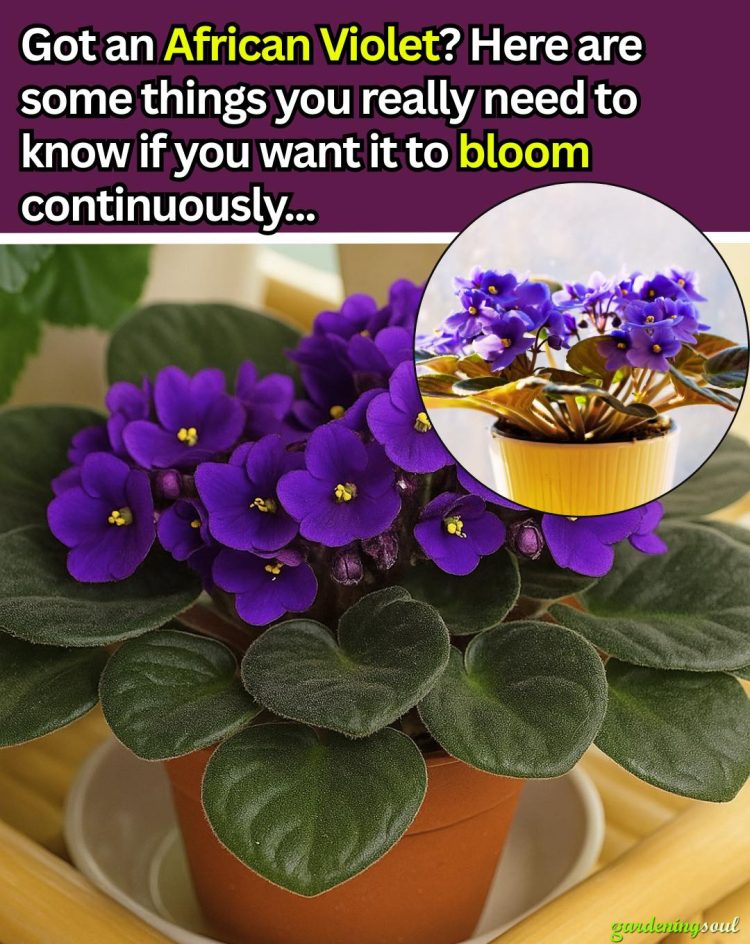6. Repot Regularly to Refresh Soil
African violets prefer slightly crowded roots – but old, compacted soil can inhibit blooming.
When to Repot
Repot every 6–12 months.
Signs you need to repot:
Water drains too quickly or too slowly.
Roots circling the pot.
Soil appears crusty or hard.
How to Repot
Use a light, airy mix: Equal parts peat moss, perlite, and vermiculite.
Choose a pot no more than one-third the diameter of the plant’s leaf spread.
Repot gently to avoid damaging roots.
7. Remove Spent Blooms and Yellow Leaves
Deadheading (removing old blooms) signals the plant to produce new flowers.
Snip faded blooms with sterilized scissors.
Remove yellow or damaged leaves.
This keeps the plant healthy and directs energy to new growth.
8. Encourage Blooming with Leaf Pruning
Sometimes African violets get “leaf bound,” producing lush leaves but few flowers.
How to Prune for Blooms
Remove outer row of leaves (the largest, oldest leaves).
This allows more light and airflow to the crown, encouraging flowering.
Note: Don’t remove too many leaves at once – about 2–3 per session is safe.
9. Provide a Rest Period
African violets occasionally need a break between blooming cycles.
Reduce watering slightly for a few weeks.
Maintain bright light.
Resume regular care, and plants often respond with fresh blooms.
10. Propagate for New, Vigorous Plants
If your violet remains stubborn, consider propagating new plants. Young African violets tend to bloom more readily.
How to Propagate
Take a healthy leaf cutting with 1–2 inches of stem.
Place in water or directly into moist soil.
Roots and new plantlets appear in 4–8 weeks.
Transplant babies into small pots once they’re large enough.
Common African Violet Blooming Problems – and Solutions
Problem Possible Cause Solution
No blooms Low light Increase light exposure with grow lights or relocate to brighter spot.
Yellow leaves Overwatering or salt buildup Adjust watering and flush soil.
Brown leaf tips Low humidity Increase humidity around plant.
Leggy growth Insufficient light Provide bright indirect light.
Leaves curled under Cold drafts Move plant away from windows or AC vents.
Advanced Tips for Encouraging African Violet Blooms
Use Epsom Salt
Magnesium sulfate can stimulate flower production.
Mix 1 teaspoon of Epsom salt per gallon of water.
Use monthly as a supplement.
Try Bloom Boosters
Bloom booster fertilizers have higher phosphorus content, promoting bud formation.
Example ratio: 15-30-15.
Use sparingly to avoid overfertilizing.
Provide Gentle Air Circulation
African violets benefit from gentle airflow, preventing mold and encouraging sturdy growth.
Use a small fan on low, not blowing directly on plants.
Frequently Asked Questions
How long does it take African violets to bloom?
Under good conditions, new plants may bloom within 8–12 months from a leaf cutting. Mature plants can bloom several times per year.
Why do African violet buds dry up before opening?
This often results from:
Dry air.
Sudden drafts.
Under- or overwatering.
Pests like thrips.
Can African violets bloom year-round?
Yes! With consistent light, warmth, and feeding, many African violets bloom continuously.
African violets are joyful houseplants, offering a burst of color even during dreary winter days.
By tuning into your plant’s needs and adjusting your care, you’ll be rewarded with vibrant flowers and a thriving, happy African violet.
